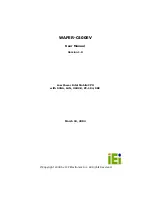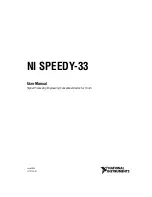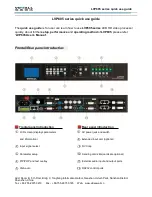
23
BASICS
22
BASICS
4
large egg yolks
¾
teaspoon (3.75ml) kosher
salt
1
teaspoon (5ml) dijon
mustard
1
tablespoon (15ml) fresh
lemon juice
1
tablespoon (15ml) water
¾
cup (175ml) grapeseed or
vegetable oil
makes 1¼ cups (300ml)
1. Insert the chopping blade into the work bowl of the
food processor. Process the egg yolks, salt, mustard,
lemon juice and water until smooth, about 30
seconds.
2. With the machine running, add the first ¼ cup (60ml)
of the oil through the feed tube in a very slow
stream, being sure each drop is incorporated into
the yolks before adding the next. This step should
take about 1 minute. Once the mixture is emulsified
and homogenous, slowly add the remaining oil until
thick, about 4 minutes. Taste and adjust seasoning
accordingly.
NOTE:
For fresh herb mayonnaise: process
1
⁄
3
cup
(75ml) firmly packed fresh herbs (i.e., parsley, dill,
tarragon, basil, etc.), stems removed, with the yolks
before adding the oil.
*Raw egg warning: Caution is suggested in
consuming raw and lightly cooked eggs due to the
slight risk of salmonella or other food-borne illness.
To reduce this risk, we recommend you use only
fresh, properly refrigerated, clean, grade A or AA
eggs with intact shells, and avoid contact between
the yolks or whites and the shell.
For lower-cholesterol mayonnaise, and to avoid
using raw eggs, Egg Beaters
®
may be substituted for
the egg yolks.
Nutritional information per serving
[1 tablespoon (15ml), using egg yolks]:
Calories 93 (96% from fat)
|
carb. 0g
|
pro. 1g
|
fat 10g
sat. fat 1g
|
chol. 41mg
|
sod. 104mg
|
calc. 5mg
|
fiber 0g
Taste the difference in homemade mayonnaise.
BASIC mAYONNAISE
BASIL PESTO
This is a slightly cheesier version of the standard pesto,
so adjust the amount of cheese if desired. Try any combination
of herbs or nuts in this recipe.
makes about 1¼ cups (300ml)
1. Insert the chopping blade into the work bowl of the
food processor. With the machine running, drop the
cheese and garlic through the feed tube to process
until finely chopped, about 30 seconds. Add the
nuts and pulse to chop, about 5 to 6 times. Add the
basil and using 10 to 15 long pulses, chop. Scrape
the bowl and add the salt. With the machine
running, add the olive oil in a slow, steady stream
through the feed tube, processing until combined
and an emulsion is formed, about 1 minute. Scrape
down the sides of the work bowl.
2. To store the pesto, transfer to a glass jar or airtight
container; tap to remove all air bubbles and even
out the surface. Cover the surface directly with
plastic wrap and refrigerate. The pesto will keep for
5 days in the refrigerator, or it may be frozen.
Nutritional information per serving [1 tablespoon (15ml)]:
Calories 72 (80% from fat)
|
carb. 0g
|
pro. 1g
|
fat 8g
sat. fat 1g
|
chol. 2mg
|
sod. 74mg
|
calc. 40mg
|
fiber 0g
2
ounces (60g) Parmesan or
Pecorino cheese, cut into
½-inch (1.25cm) cubes
1
garlic clove, peeled
¼
cup (60ml) pine nuts,
lightly toasted
3
cups (750ml) tightly
packed
fresh basil leaves [about
3 ounces (85g)]
¼
teaspoon (1ml) kosher salt
½ to ²⁄³ cup (125 to 150ml) extra
virgin olive oil













































